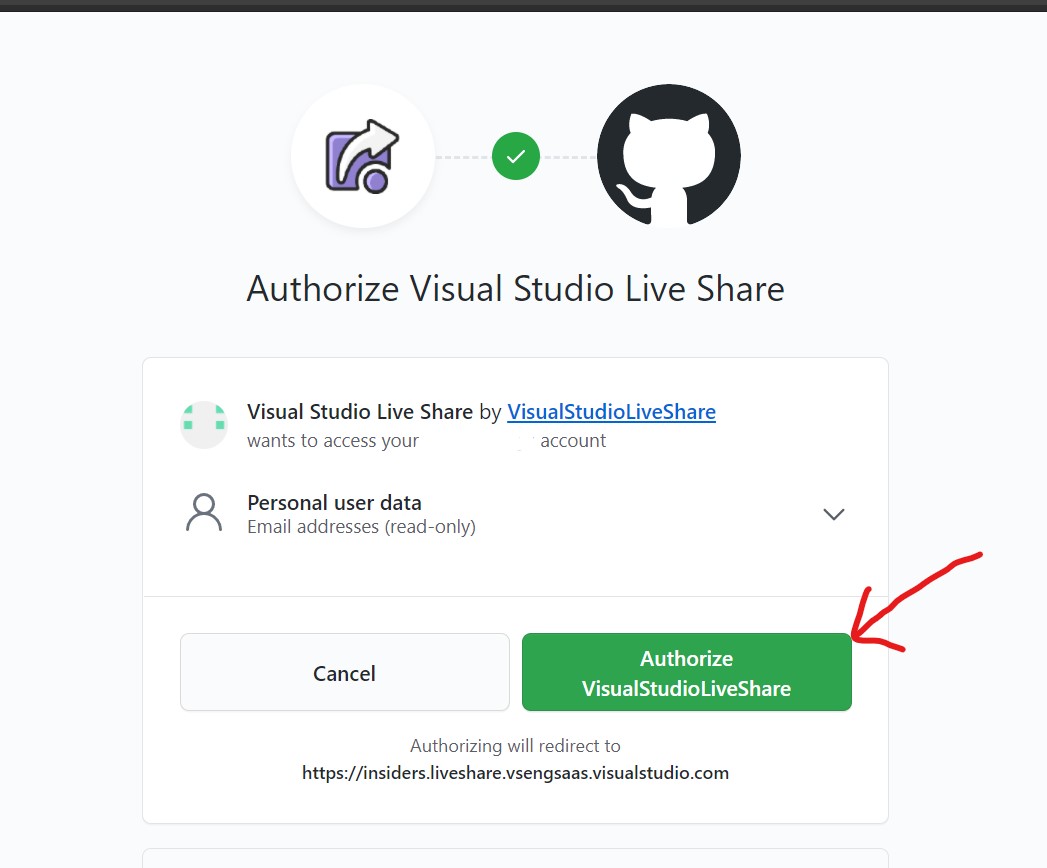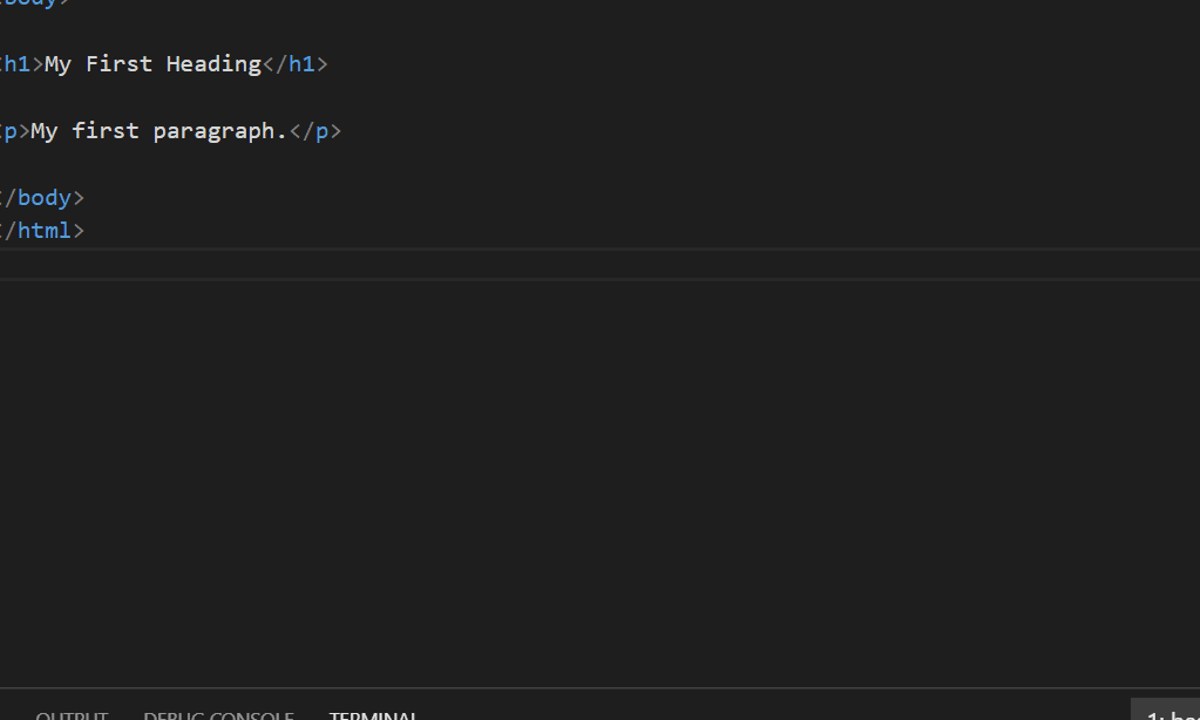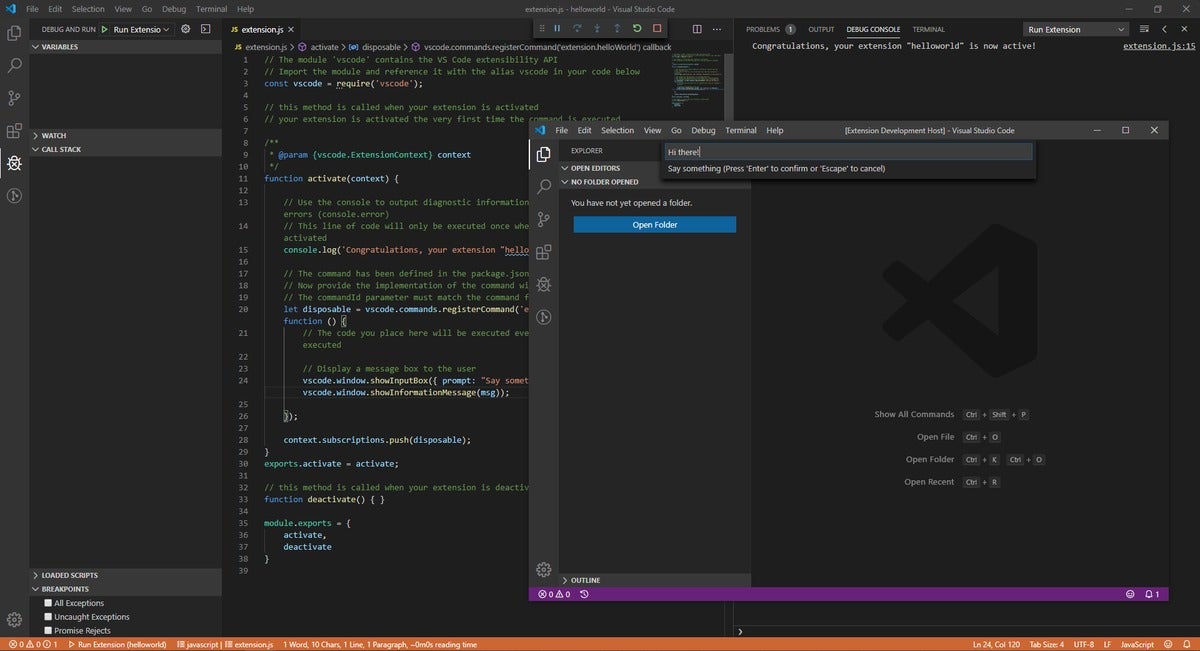

It knows this because it's inspecting the import which is a node module.īut with Remote Repositories, we're looking directly at GitHub and the node_modules folder never ever gets pushed to GitHub unless you are me 10 years ago. For instance, if you started writing a fetch, VS Code will help you with that because it knows about fetch.īut you do not get the intellisense on project files that VS Code gives you when it runs your project locally.įor instance – locally, VS Code knows about useEffect which comes from the react import.

Because you essentially are.Īs far as the editing goes, you get much of what you would expect in VS Code. This is the same as if you were editing the file directly on GitHub. You don't have to push them because you are already on GitHub. In order for the changes to be saved to the repo, you'd have to commit them from the source control view. They aren't automatically committed to GitHub.
#Visual studio code github online full#
You have full editing capabilities with a big difference being that you don't have to save anything.
#Visual studio code github online how to#
Ok – so scary security warnings dismissed, what can we do here? How to Work with a Remote Repository You have to tell VS Code that it's cool, you know and trust this code and you're 100% sure it's not going to shutdown your oil pipeline.

This is part of the new Trusted Workspace settings in VS Code.īy default, VS Code now turns off Tasks, debugging, some workspaces settings and any extensions that might try and execute something the first time you open a folder. You'll notice disclaimers about "some features" not being available and that you are in "Restricted Mode". You're looking at it on GitHub through the window of VS Code. VS Code will reopen and you'll see that repository just like you were working with it locally. The third option lets you open a Pull Request branch so you can pretend to thoroughly review it. You can paste in the URL to a GitHub repo if you happen to just have that hanging around on your clipboard (weird) OR you can browse GitHub by selecting "Open Repository from GitHub". You can also get to this option from the Command Palette if clicking on things with a mouse is too much trouble. If you have other Remote extensions for VS Code installed, you'll see a lot more options in this list, so just search for the right one. You'll see a new option for "Open Remote Repository". from the remote indicator (the green button in the lower left corner of the status bar).To open a GitHub repo, click on the green indicator in the lower left-hand corner of VS Code. from the Command Palette, F1, or by choosing Open GitHub Repository. You can quickly and easily open a GitHub repository either by searching for GitHub Repositories: Open Repository. GitHub Pull Requests and Issues extension Working in Visual Studio Code with a repository uses separate tools. Visual Studio Code tools to work with Git and GitHub Select the ellipsis (.) then select Show Git Output. You can view the Git commands run when you use the Source control extension. Select the ellipsis (.) then select: Push or Push to. Select the Source Control icon from the activity bar. If you have just one remote, you won't be asked to select the remote name. Select the remote name from the pop-up box. On the Visual Studio Code status bar, select the push icon to the right of the branch name. If you have multiple upstream remotes, select the remote then press Enter.In the command palette, filter with Git then select Push.Open the command palette with the key combination of Ctrl + Shift + P.If you don't have a GitHub repository yet, but would like to start your project locally, initialize your folder with git. Open an integrated terminal from Terminal -> New Terminal.Ĭlone your repo with the following git command: git clone Ĭhange your terminal into that new subdirectory: cd YOUR-REPO-NAME When you receive the notification asking if you want to open the cloned repository, select Open. Select (or create) the local directory into which you want to clone the project. If you are asked to sign into GitHub, complete the sign-in process.Įnter azure-samples/js-e2e-express-server in the Repository URL field. When prompted for the Repository URL, select clone from GitHub, then press Enter.

Open the command palette with the key combination of Ctrl + Shift + P.Īt the command palette prompt, enter gitcl, select the Git: Clone command, and press Enter.


 0 kommentar(er)
0 kommentar(er)
